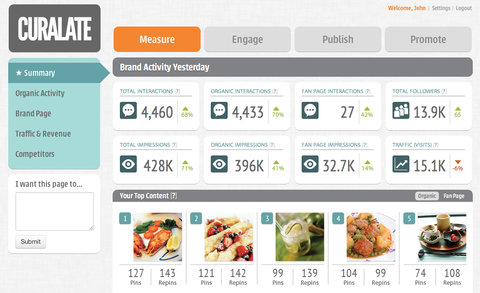
Start
The adventure of new ventures.
One of the hardest things for an entrepreneur to do is to admit defeat. But in the case of Apu Gupta and Nick Shiftan, failure was likely the best thing that could have happened to them.
In 2011, Mr. Gupta, 37, and Mr. Shiftan, 31, founded Storably, a company they billed as Airbnb for storage space. Anyone with spare space — in their basement, driveway, garage, closet — could rent it out to those in need. Storably facilitated the transaction, provided insurance and allowed users to post reviews.
Mr. Gupta and Mr. Shiftan raised $750,000 from the venture capital firms NEA and First Round Capital and introduced Storably in September 2011. Two months later, they knew it wasn’t working. The site was getting barely 3,000 visitors a month. “That’s the equivalent of opening a retail store and having crickets show up,” Mr. Gupta said. “It’s abysmal. By the time we shut down, only 23 people had used the site for a transaction.”
At that point, Mr. Gupta and Mr. Shiftan had burned through 25 percent of their money and felt they had two options, which they presented to their investors. “We said we can give 75 percent of your investment back and liquidate the company, or we can figure something else out,” Mr. Gupta said. “And they told us, ‘We didn’t invest in the idea, we invested in you guys. We don’t want our money back, so go figure something else out.’ It was an amazing thing to hear.”
 Courtesy of Curalator After two months, Apu Gupta (left) and Nick Shiftan knew Storability was not working.
Courtesy of Curalator After two months, Apu Gupta (left) and Nick Shiftan knew Storability was not working.
The pair — along with their first employee, Brendan Lowry — brainstormed for about a month, coming up with three or four ideas apiece each day. At the end of the month, they had about 70 ideas, seven of which they deemed promising. They tested a few, including DrinkedIn, an application for LinkedIn that would match users and send them to a bar to have a drink and network.
But the idea that rose to the top was a platform that allows companies to measure the impact of Pinterest and other visual social media. They called the company Curalate, and they introduced it in beta in March 2012 and for real two months later. Mr. Gupta said the rise of Pinterest last year looked similar to Twitter’s early days with brands “falling over themselves to get on board but reluctant to commit until they had some way to measure their presence on the platform.”
Enter Curalate, which created a way to listen and measure visual conversations. The company’s algorithm recognizes images using pixels and then matches it to a brand. “The platform tells companies the conversations people are having about their product,” Mr. Gupta said.
He told the story of a shoe offered by the department store HM. The company’s Web site displayed the shoe in a bright neon color, but the shoe customers were “pinning” and describing in loving terms was a combination of beige and pink. “So there was a big discrepancy between what the brand thought people wanted versus what people actually wanted,” Mr. Gupta said. “And that’s the whole point behind what we’re doing. We reveal, by looking at their imagery, what consumers really care about.”
Here’s where the company stands now, roughly a year after its introduction.
Employees: 15
Location: Philadelphia
Pitch: “We are trying to help brands form meaningful relationships with their customers,” Mr. Gupta said. “You have to be able to understand your customers and if they speak to you visually, you need a platform for that. It’s not just about Pinterest, but a fundamental shift in consumer behavior. Consumers increasingly talk about brands using pictures rather than words. Even Facebook has become a more visual medium. We pin and reblog and Instagram our lives.”
Challenges: Finding the right talent — salespeople, developers and designers — has been an ongoing challenge. A more perplexing challenge, Mr. Gupta said, is staying focused. Curalate’s space is so wide open that the company can try just about anything, and that freedom has caused them to sometimes lose direction. “When a space is new, it’s easy to feel pulled in different directions by clients,” he said. “It’s easy to lose your own point of view. So we really have to figure out a road map. And sometimes that means we need to say, ‘this is what we build and it’s not right for everyone’ and we may have to turn some clients away.”
Traction: Mr. Gupta said Curalate was now used by 350 brands that paid a monthly fee for its software as a service, which included a suite of marketing tools in addition to analytics. The company recently added the ability to analyze Instagram images to its platform. “Pinterest is about the things people aspire to buy, the things they want,” Mr. Gupta said. “Instagram is people celebrating what they bought.”
Revenue: The company declined to discuss its revenue, but the typical brand spends about $1,500 a month for Curalate’s services.
Financing: After going through what was left of the original $750,000, the company raised another $3 million late last year from the same investors.
Competition: Repinly, Piquor and PinReach are a few companies operating in the space, but none of them “is doing anything across platforms or using image recognition,” Mr. Gupta said.
What’s Next? “We want to broaden the number of platforms we get insights from,” Mr. Gupta said. “Companies also want us to build things that encourage consumers to communicate visually more often.”
What do you think? Have Mr. Gupta and Mr. Shiftan hit upon the right idea this time?
You can follow Eilene Zimmerman on Twitter.
Article source: http://boss.blogs.nytimes.com/2013/05/09/one-social-media-start-up-rises-from-the-ashes-of-another/?partner=rss&emc=rss
